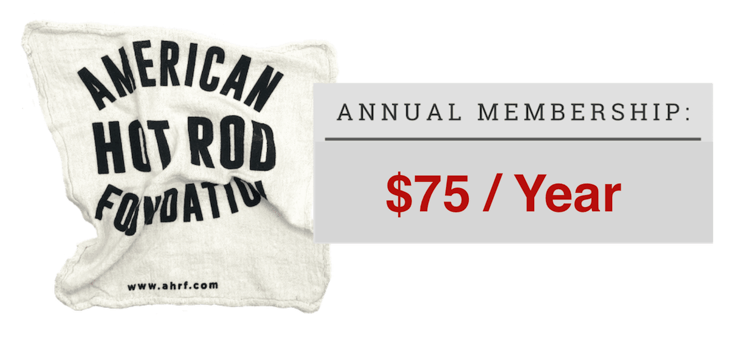Along with Bobby Meeks, Tommy Sparks is widely considered to be one of the greatest flathead builders of all time.
Born in the small town of Stuart, Iowa, on June 6, 1926, Thomas Samuel Sparks was the son of the town jeweler and watch repairman. Because Tom’s father was one of the few people in the community with a thriving business, he was born into what was considered a relatively wealthy family for the area. “We had one of the biggest homes in the community, my father had a good car and was a member of the local country club, and we had indoor plumbing. We were looked at as a rich family,” recalled Sparks. But, within a matter of a few years, the Sparks’ lives would be turned upside down by fate and financial devastation when his Mother passed away when Tom was 2 years old, and the Great Depression wiped out his Father’s business.
At the age of 9, Tom Sparks found himself on a train heading to California along with his father, older sister, their basic belongings and anything else they could stow away. Tom remembered, “We had a beautiful lamp in the front window of our home in Stuart that my mother always liked, and I was given the job of carrying that lamp the whole way to California with strict instructions from my dad to not break it. So, I rode the train the whole way from Iowa to California with this lamp on my lap. I even slept with it.”
Tom and his family got off the train in Los Angeles in 1935 to start their new lives and would begin their time in California by moving in with Tom’s Aunt at her small home in Hollywood. “My sister and I shared a room, and my dad built a makeshift bedroom of his own on the front porch because there was no room for him in the house. He lived out there for the first few years we were in California until he got a good enough job that we bought a house of our own. We were all pretty happy, though. California was an absolute paradise at that time. There was very little traffic, it was all very clean because most everything was new, and we no longer had to put up with the harsh winters and hot summers of Iowa. I know I was happy about California. I suppose my dad never really recovered from losing our mother and his business and all that he’d owned in Iowa. He just really never tried too hard at anything after that. He didn’t really know what to do.”
In spite of the family hardships, young Tom found plenty to do and was off and running with a new and active life in sunny California. As luck would have it, another young boy of nearly identical age to Tom moved in across the street, and they quickly became best friends. His name was Fred Carrillo. Incredibly, both Fred and Tom would go on to be among our most important hot rod pioneers. Fred and Tom discovered their mutual love for all things mechanical and began learning about the internal combustion engine by way of building and flying gas-powered model airplanes in an empty field behind the old Gilmore Stadium race track. As young kids, they would also sneak into the track for race events and watch their racing heroes of the day speed around the course in their state-of-the-art midget race cars.
Soon it would be time for Tom to get a car of his own and, at age 14, he scraped together enough money to buy a used ’32 Ford V8 3-window coupe from the back row of a used car lot in Hollywood. His Dad drove the car home and parked it on the street in front of their home, promising young Tom driving lessons as soon as he felt he was ready. Unable to control the urge to drive his new car, Tom and a friend got in the car one day to see if they could figure out the contraption on their own. Armed with nothing more than having observed the motions involved in driving when riding with family members, they were able to get the car to start after a long struggle. Sparks remembered, “Once we got it running, it took us a long time to figure out how to put it in gear. It’s a miracle we didn’t destroy the transmission. Once we got it to start moving, we drove down the street toward a busy intersection and realized we didn’t know what to do to make it stop. We were both pushing everything and grabbing levers but it was over before we knew it. We’d run through the intersection, hitting one car, and then came to rest up against the side of a parked car on the other side of the street. I was ok, but my friend broke some teeth and cut himself up pretty bad on the windshield. They called my Dad at work, and he came down and talked to the police. I don’t remember what we did to settle up with the people whose cars we damaged, but somehow I was able to keep my car and learned how to fix it myself. Fred Carrillo and I repaired the radiator as best we could, and then we took the fenders off of it. It was then that I guess I had my first hot rod.”
Little did Sparks know that the act of fixing his own car would lead to his first employment, as a “fender and body man” at a Packard dealership in Hollywood. It was there that Tom first worked on cars in a professional setting. “I learned all of the basics there. I was only at the dealership for about a year before I went to work for the war effort spraying sealant on the inside of enormous fuel cells used for ships at a big factory in Burbank, but I learned a lot in a short amount of time. By the time I left, they were just teaching me how to spot-in paint repairs,” remembered Sparks. During the war, Tom was able to purchase his first proper hot rod, in 1944 – a full-fendered ’29 Model A Ford roadster that had already been turned into a nice, finished, hot rod. It featured a 21-stud flathead V8 with shaved heads, a Winfield cam, twin 97 carburetors on a slingshot intake, was lowered front and rear, ran white-wall tires, a ’32 grill shell, custom interior and dash insert, and solid hood sides. A very nice roadster at that time by anyone’s standards and one in which Tom would make his first runs at the dry lakes in on October 21, 1945. He was one of the few people who attended and ran at this first SCTA meeting after the close of WW2.
Now, with the war over, Sparks went to work for a man that would propel him into the specialized world of auto racing. That man was Doc Ire. Sparks was now servicing and repairing Doc’s small fleet of midget race cars and would eventually take a turn behind the wheel of one of Doc’s “Red Circuit” Ferguson-powered Kurtis midgets. He would run the little racer for nearly two full seasons before having his next, life-altering encounter.
One night in 1947, at a small and unrewarding dirt track, Tom was struggling around the circuit and doing his best to crack into the middle of the field. When he came in, disgusted, after a particularly unsuccessful heat race, he was approached in the pits by none other than Eddie “Bud” Meyer. “I’ll never forget it,” Sparks said, “Bud was Eddie Sr.’s son that he’d send out to races to keep an eye on the cars for which they built engines or sponsored, but also to stir up business and just keep an eye on what was happening in the local race circuit. Bud was a couple years older than me, but I knew who he was, and we all knew about his Uncle Louie Meyer [the first three-time winner of the Indianapolis 500]. Of course, anyone into racing at that time knew all about Eddie Meyer Speed Equipment and their speed shop. They were very well respected. Anyway, Bud came over to me in the pits that night, and I’ll never forget what he said. He told me, ‘Sparks, you got the best running car at every race I see you at, but you can’t drive worth a damn. Why don’t you come to work for us so we can make a proper mechanic out of you before you kill yourself.’ So, I left Doc Ire and went straight to work for Meyer’s, and that really sent me on my way. We had one hell of a crew at that time. In the shop were me, Fred Carrillo, Phil Remington, Bud Meyer, Ray Brown, Louie Senter, and a very young Ed Pink. So, it was one heck of a place to learn and learn really fast. Of course, we all had roadsters that we drove to work every day, and the old man [Eddie Sr.] would sometimes let us work on them there after hours. We had good running cars. Ray Brown’s was probably the fastest, but we were all a pretty tough group to contend with out on North Sepulveda and at the other street racing spots.”
Tom would ultimately learn a lot of what would make him a legend during the years 1947-1950 working as a machinist, engine builder and tuner at Meyer’s. When he started work at the shop, his roadster ran 91 mph at the dry lakes. Before he left his job at the shop, he had the car running as fast as 117 mph. Ray Brown said of Sparks, “Tommy had an ability to read an engine’s state of tune like no one else I ever saw. He could yell out a list of five things wrong with your engine within seconds of you starting and running it for him. To this day, I’ve rarely seen anyone that had that sense built into them like Tom did.”
The friendship and mutual admiration between Tom Sparks and Ray Brown that developed from their years of working side by side at Meyer’s would eventually have them hatch a plan to break out on their own. In early 1950, Ray Brown left the Meyer shop and opened Ray Brown Automotive and was able to coax Sparks away from the Meyer shop a few months later. Together they built Ray’s business into one of the more important and trusted speed shops in southern California during the early 1950s. But, the rub for Sparks was always that it wasn’t a true partnership. This was Ray’s shop and would always be. In spite of the success that Ray Brown Automotive was enjoying, it was inevitable that Tom would eventually strike out on his own.
Ray Brown remembered, “I always knew Tom wasn’t going to work for me forever. He was just too driven and too talented to not be in charge. I was always fine with that, and we’ve remained good friends throughout our lives. I definitely can’t say the same thing for the Meyer family! They sure didn’t like it when people left after they’d invested in training them. That was a big no-no around that shop, but a whole lot of guys did just that.”
Bud Meyer didn’t deny this when asked about it. “It used to really rub me wrong when we’d take the time to make these guys into proper mechanics, and then they’d just leave on us. And they’d end up being our competition! It felt like we were running some kind of school where the students left only to turn around and try and put you out of business,” Meyer said.
In 1953, Tom Sparks met a charismatic salesman named Ted Bonney. Bonney was a bit of a car guy and had a fully dressed ’32 roadster that was his daily transportation, but he was no mechanic, and the two met when Ted and his roadster sought out Sparks for some proper tuning. It was Ted Bonney who put the bug in Tom’s ear to set out on his own and have his name on a business. The catch was that Ted would be the promoter of the business, he’d do the books and schedule the appointments, and Sparks would work his magic on customer cars. Soon a deal was hammered out, a shop space was leased at 5578 Melrose Ave in Hollywood, and Sparks and Bonney Automotive was born. Tom remembered, “Ted was always the salesman. He could bring in all the customers, and I did most of the work. He really wasn’t a bad mechanic, and he did help in the shop from time to time, but I don’t think he liked getting dirty.”
Now that Tom was in charge of a shop and a business that bore his name, he set out to plant a flag in the red-hot world of hot rodding and racing in 1950s southern California. Within a year of Tom starting his new business, he would place himself on the center stage of early drag racing, sports car racing and hot rodding, and his accomplishments during this time seem nearly impossible when added up. This would include a completely scratch-built, Ford-based sports special for customer Jaques Bellesilles that, in Sparks and Bonney livery, ran at the front of the pack against some of the most exotic machines that Europe had to offer in both Cal-Club and Southern California SCCA road racing. This foray into sports car racing brought in many customers from that slice of the LA-area car community, and Sparks soon found himself servicing everything from Jaguars to Allards to Porsches and everything in between. He even purchased a wrecked Maserati Grand Prix car used in the movie “The Racers” from a nearby studio lot and gave this new game of sports car racing a go behind the wheel. But, it was really hot rodding to which Tom was drawn. He had maintained a strong presence in the hot rod world by grabbing the cover of Rod and Custom magazine in 1954 with that now-famous overhead shot of his four-car dry lakes and Bonneville team of hot rods painted in that unmistakable navy blue and white livery. The ever growing sport of drag racing seemed like the better fit for him. So, in ’54, Tom purchased a well-kept little ’37 Willys coupe from an older gentleman out in the San Fernando valley and set out to turn it into a drag strip terror. He couldn’t have known at the time just how important this car and its mind boggling performance would be to his professional life and, ultimately, his legend.
“Well, I was always a fan of a more square engine, and the combination of overboring [3 and 3/8″] and destroking [1/8”] the flathead could get me that with the right math. So I decided to build a flathead that could rev higher and faster and then multiply all that with a supercharger. It was a pretty good combination and was even durable. In fact, I never had an engine failure with that blown flathead other than a burnt piston or two. It would rev to about 7,000 rpm and never gave me any trouble. I ran an Italmeccanica blower with a Harmon and Collins cam, mag, and three 97 carburetors on usually about a 70% mix of nitro. It would use nearly a gallon of fuel on every pass. We used 2nd and High gear only in the ’39 Ford transmission and ran a quick change in the rear, although I don’t remember ever playing with the gearing. We had a good combination almost from the start, and I had the engine set so far back into the chassis that I could beat most guys out of the hole pretty bad. It always got good traction, and that was hard to achieve with the tires back in those days. It was an uncomfortable car to drive because you sat almost right in the back of it, and the gas pedal was mounted high up on a big home-made firewall I made. It worked, though, and like I say, I ran the car for about two years and really never changed a thing about it. In fact, I won 55 trophies in one season with that car. Because it ran so fast, a lot of guys would protest me for different reasons and sometimes refuse to race. Because the NHRA were still figuring out classes at that time, I’d sometimes be put in a class with just rail-type dragsters. But, I could sometimes beat them, too,” Sparks remembered. “The best time I ever got on it was in 1956 just before I quit racing it. It ran a best of 10.01 @ 133 mph and caused quite a stir in Drag News at the time. I then got out of it when Tony Nancy wanted me to build him a similar drag racer to promote his new upholstery business. I had already built him a hot flathead for his street roadster at the time [a ’27 T], so we were friendly, and I guess he trusted me to do things right. He saw how important the Willys was for promoting my shop, and he thought he’d do the same. He wanted to race a roadster, though, so that people could see his upholstery work at the race track. So, I made a deal with him, and we took the entire driveline out of my Willys. The engine, transmission and rear end, and put it all in a ’29 roadster that he’d bought. That was his first drag racer… the original 22jr.”
Now that Tom Sparks had taken on and won at drag racing, he set his sights on the new sport of stock car racing that had made its way to the west coast from the southern states of America. In late 1956, Sparks ran into his friend Bill Stroppe at an auto parts store in Hollywood. The two began talking, and Bill mentioned the factory-backed Mercury stock cars that he’d been running all year. Sparks was intrigued and asked how he could get involved in that kind of racing. His timing couldn’t have been better. Because the season had just come to a close, Stroppe was about to take delivery of his new car for the ’57 season and needed to unload his current car. Sparks stepped right up and a deal was made. “Bill Stroppe was a really sharp guy, and I figured that he’d probably done most of the hard work to make the car really go, and that would make it easier to step into and run up front. What made the deal even better was that the new car he was getting had a slightly different motor and brake set up, and he had no use for any of his spares. So I ended up with two truck-loads of extras with the car. Well, I could have run for three full seasons with the spares that came with that deal. I got everything back to my shop, and we did the same paint job on it as we had on the sports car, the four hot rods we ran, and the Willys. Navy blue with a white stripe and white lettering. It was a good looking car and ran real strong from the get-go. My problem was I had a driver [Johnny Tolan] who was either gonna win or crash. Nothing in between. So, he’d bring the damn car back after each race with every panel on it all banged in. We ran for one full year and a little into the next before I moved on from it. But we ran good and were up front a lot. Ran at places like the new track at Riverside and out at Pomona. It was good racing, but the Mercury was a little heavier than some of the other cars. The Oldsmobiles were good and the Chevys that had the fuel injection were good, too. We probably had them on horsepower, but the handling wasn’t what it needed to be. It wanted to go straight!” Sparks said. “Anyway, I was into my bicycle racing at this time and was really moving toward more work in the shop, and racing was expensive. I’d also started a family by this time, and I figured I’d done a lot of what I’d wanted to with racing cars.”
Although not hot rodding- or auto racing-related, it should be noted that Tom Sparks also was a champion-level bicycle racer during the latter half of the 1950s and throughout the 1960s. Tom remembered, “I had a customer bring a car in for servicing, and when he dropped it off, there was a bicycle in the back seat. Not a regular bike but, you know, a race bike. It was an Italian bike and was pretty unusual. I didn’t know anything about them and hadn’t ridden a bike of any kind very much in my life, so, I didn’t know. I just thought it looked neat. So, on my lunch break, I went and unloaded the bicycle and rode it around the parking lot, figuring out the shifting and all that. I ended up riding it around the neighborhood a bit before bringing it back. When the customer came back to get his car, I asked about the bike, and he told me he was in a club and they raced them. You know, up in the mountains and all over. I’d never been to one of these, and he mentions a race happening that coming weekend. So, me and my wife, Laura, went up Angeles Crest Highway to see these guys on their bicycles, and I was hooked. When that first big pack of guys came rushing by, I was really hooked. So, I bought myself a good racing bike and joined the club and started racing.”
Incredibly, after Tom bought his first racing bike in 1956, he became the California state Road Racing Champion less than two years later, in 1958. In 1959, he was invited to try out for the 1960 Olympic team and flew to New York to compete against other riders from across the country for a spot. He was paired with another rider during the trial and was always frustrated when speaking of the outcome. “I got put with this big tall guy who thought he knew everything. I told him that we had to stay together and work the air as a team. Well, he took off and was riding at a sprint pace and screwed the whole thing up. I guess he just wanted to show them how fast he could ride by himself. Well, that wasn’t the idea. I knew who a lot of the other guys were that rode in this because I’d seen them in my bicycle magazines. I knew I could out-ride almost all of them at that time. I was fast, and I was really good on stamina when other guys would wear down. If I’d had the right guy to ride with for that trial, there’s no doubt I’d have made the team. But, because of what he did, neither of us did.” Sparks would go on to have a very impressive career in bicycle racing and continue to win races well into his 60s.
By the time the late 1950s rolled around, Tom had left auto racing behind, had bought Ted Bonney out of their business, and was now the sole owner of Sparks Automotive. He was known as one of the top guys to go to for “special tuning” and was one of the few licensed McCulluch supercharger dealers in Los Angeles. “We’d get a lot of hot rodders and racers come in for tuning and different things. A lot of that was because people knew that Willys I ran, but also because we’d done the sports car racing. It was a neat thing because I liked to work on all kinds of cars, and most shops didn’t do that. We had a lot of Jaguar customers, but I’d also still build a flathead for a racer every now and then. We also did a lot of things that I’d done while at Meyer’s. We’d change out camshafts for people and hop up their cars in different ways. Keep their multi-carb set ups in good tune. There were a lot of multi-carb cars running around back then, both stock and modified jobs. There was always plenty of work around Hollywood because people really liked their cars,” Sparks remembered.
The decade of the 1960s would be one of transition for Tom as his business continued to grow and afforded him the ability to invest in other side projects. “Because my shop was just across the street from Paramount Studios, I got a lot of movie work and movie business customers. I’d keep old cars running on sets and for driving shots and started to get to know people around that world. That’s how I got to know people like Steve McQueen. He became a customer after coming by my shop one day because he knew I had interesting cars in my shop a lot of the time. He was a neat guy,” Sparks said. “Anyway, I got the idea to start building camera cars out of old trucks and anything else I could. There wasn’t much in the way of special-built vehicles for that kind of stuff, and I didn’t see that anyone else was doing it. Lucille Ball was a customer of mine, and she sold me one of the custom-made Chrysler camera cars that they had built for their studio. I turned it into a wrecker eventually, but I rented it to different production companies for a while, and that got me thinking about making other camera cars, so I did.”
As the 1960s went along, Tom would begin to build and modify vehicles for camera-car use and begin to amass what would eventually become an enormous collection of older vehicles used specifically as rentals for the movie business. This collection would grow to nearly 100 vehicles by the early 1970s and afford Tom the ability to transition away from his business’ mix of general-business auto repair and specialty tuning, to what Tom then had his eye on… high-level concours auto restoration.
By the late 1960s, Sparks had already done a couple of frame-up restorations for customers and found that he enjoyed the work. As the 1970s came on and his movie car rental business had taken off, he was now setting his sights on becoming a full-time, classic-car restorer. Once again, the movie studios provided one of his first high-level restoration jobs in the form of a one-family-owned Stutz DV32. Legendary Hollywood photographer Bruce McBroom [If you’ve seen the photo of Farah Faucet in the red swim suit, you’ve seen his work] had heard about Sparks Automotive and decided to entrust Tom with his family treasure. Sparks said, “When I was kid, the best cars in the world were made here in the 1930s. They were mostly hand-built cars, and the craftsmanship was better than on other cars, but they weren’t anything I could ever afford. I’d never been around things like Duesenbergs or Stutzs or any of the big custom-body cars until I began restoring them. That was the other side of the world from hot rodding, but they were always my favorite cars, and I thought if I couldn’t own one, then maybe I could restore them for other people. So that’s what I did.”
The LeBaron-bodied Cabriolet DV32 Stutz of McBroom’s would blow the concours and restoration world wide open to Tom Sparks, as his attention to detail and astonishingly high level of finish work was simply unheard of from a first-timer. The Stutz won many a concours when it was finished and, incredibly, continues winning today… all on Tom’s original restoration! Almost immediately, Sparks was on a stage competing with legendary Los Angeles-area restoration shops such as Hill and Vaughan, painters such as Junior Conway, and his old upholstery buddy, Tony Nancy. Sparks would blaze through the decade of the 1970s performing one high-level concours restoration after another [one per year] and somehow pulling this off with only himself and two other workers [Scott Veazie and LeRoy Neyer] running the show. “We had a good setup. The movie cars were making enough money that I could concentrate on the restorations. I did a little bit of everything on the cars. Built the engines, did a lot of the body-prep work, and did the wiring and such. Scott was the painter, and LeRoy was good with mechanics. We’d assemble the cars together and get them all sorted out before they left. Scott was a good detail man and so, altogether, the cars were really ready for the show field when they left. Once we started doing cars for Pebble Beach, I told my customers that I guaranteed that my restoration would get them either a win or a place in class. Not a lot of guys would make a promise like that, but we knew we did good work, and we never had a car not live up to that guarantee.”
In total, over 20 of Sparks’ restorations either placed or won their class at Pebble Beach, and many won best of show awards at other high-level concours throughout the country. All of this from three guys in a small, single-bay shop on a busy street in downtown Hollywood that only received a paint booth in the final years of its life. Tom remembered, “We never had a paint booth until the very end. We’d get the car ready the night before and then get to the shop the next day before the sun came out. We’d wet the parking lot outside the garage and pull the car out and paint it right there out in the open. Right on Gower Street. We’d usually finish up as the sun was really coming out and before the traffic started to get real bad. We won a lot of shows with paint jobs done that way. Most of them, in fact. I don’t think we did more than two or three once we had the booth, and there wasn’t anybody doing cars at that level that didn’t have a booth.”
The 1970s would be the decade that Tom truly built himself a stable life. He continued to race and win on his bicycle [training at a minimum of 300 miles a week], his restoration work was sought after with customers placing themselves in line for years down the road, he now had a growing family with his wife Laura and their two daughters, Barbara and Jenny, and was entering the 1980s with great momentum. It was around this time that Tom had his first thoughts looking back to his early days as a hot rodder. “I guess I was just missing having a roadster,” he said. “Maybe other guys were, too. I don’t know. I do know it seemed like I’d run into my old friends, and we’d end up talking about the old days. It was fun to have a roadster back then. It was fun to drive out to the lakes and stay overnight. Especially if you had a girl. I did a lot of things I shouldn’t have. I street raced a lot, and I used to get the police to chase me for fun. I’d always try and find a motorcycle policeman to chase me because they were more fun. They could almost keep up with a hot street roadster if they were a good rider, but the police cars then were slow, and we couldn’t get any action with them. So, I don’t know. I guess I just started thinking about having a roadster again around that time.”
So, in 1980, Tom took the remains of one of his first cars and was able to put together a hot rod for himself similar to the type of car that he and his friends ran around with during the 1940s. “I had a roadster pickup that I bought sometime around ’42 or ’43. It was after I had my ’32 coupe that I had crashed. I wanted a roadster like the other guys, and it was all I could afford. It wasn’t much of a hot rod, but it had a V8 in it and a ’32 grill shell. It was never finished, and all I ever did to it was drop the axle and reverse the eyes on the springs. I did take it to the lakes once, but I never ran it. The motor was basically stock, and it was really more of a parts runner. A real jalopy. It wasn’t bad, but I wanted something better. That’s when I got a better job and bought my full-fendered roadster. It was more of a nice car, and I could take it on dates and such. So, that became my car, and the roadster pickup just got moved around. I don’t know why I kept it all those years when I didn’t keep my other roadster. It just wasn’t worth much. So, I took it up to Tweedy [Tom’s summer cabin outside of Los Angeles] around 1980 to restore it and make a little roadster for myself. It was missing parts because we took parts off of it through the years, but I was able to make up the rest with what I had around. I ran into a guy who used to boat race back when I worked at Meyer’s, and he mentioned that he still had an engine that I built for him that he never used. Well, he sold me the engine, and I put it in my roadster pickup. I probably built the engine in ’47 or ’48, and it had been under his bench for all that time wrapped in plastic. It was ported and relieved with a standard bore and stroke. I just left it that way and then used the set of Meyer heads and the Meyer intake I’d kept from my good roadster that I sold in the late ’40s. The Old Man [Eddie Meyer Sr.] had made me a deal when I worked there. I told him I needed heads and an intake for the new engine that I built for my roadster, and he said that if I painted his house, he’d give me the heads and intake in exchange. Well, after I said yes to that deal, he then said I’d have to do it using my vacation time. The Old Man was a tough guy, and we were all afraid of him. I went ahead and did it anyway and got my heads and intake. So, I still had them when I put this roadster pickup back together.”
Soon Tom wouldn’t be the only early hot rodder to see the old days start to come back around for him. One day, a full-fendered ’32 roadster wheeled into the parking lot at what was by then called “Sparks Specialty Automotive.” Tom walked outside to see that it was none other than his old pal, Ray Brown. It seemed that Ray, like Tom, was getting nostalgic for the old days and had bought himself a full-fendered and fully dressed ’32 roadster. It was a nice finished car with a working top, bent-spoke KH wheels, a good stance and a nice traditional interior. But, as Ray would tell him, “It needs a flathead.” Tom remembered, “Ray had bought this ’32 roadster and wanted to get back to having a hot rod just like I did. But he was too busy with his job at Superior [Ray was now a higher-up at the wheel-manufacturing company] and wanted me to build and install a flathead just like one we would have built back in the old days. So, I took the job and built and installed a 59A with a Merc crank and rods that had two 97s and an Isky cam and ran good. I ported and relieved the block just like we used to, and that job really got me thinking about hot rodding again. A couple years later, someone located Ray’s old roadster back East, and they were going to restore it to just like it was when Ray had it as a kid. So, I guess it was around that time when old hot rodding started coming back.”
Ray Brown’s roadster would prove to be a seminal moment on the hot rodding timeline, as it would be the first car to attract major attention as a high-level restoration of an original, surviving, WW2-era hot rod. It would be the first car of its kind to be allowed onto the show field at the prestigious AACA meeting in Hershey, Pennsylvania, and would set off a spark for other cars from the era to be found and properly restored. This would also time out nicely with many of the early hot rodders that were in Tom’s age group. Although these men were beginning to look toward retirement, most were still working and were becoming nostalgic. Fortunately for the restorers and collectors who were interested in this new-found slice of the historic car hobby, guys like Tom Sparks and Ray Brown could be easily contacted to help answer questions about their old cars and guide the restorers to help maintain accuracy when bringing these early hot rods back to life. This is exactly what Ray Brown did for the restorer of his old roadster, Jim Lowery, and Tom would soon find himself reliving the past in a similar but more hands-on way.
As the decade of the ’90s came on, this appreciation for early hot rodding was beginning to build in both the collectability of early hot rods and in younger guys who were starting throw-back car clubs as they were in the 1940s and ’50s. Finally, hot rodding was getting some long overdue respect as an original American art form, and what these early hot rodders accomplished was now being recognized for its innovation and huge impact on both Detroit and our culture in general.
Enter New England car collector and early hot rod historian Dan LeCroix. While growing up in the Northeast in the 1950s and ’60s, young Dan was a car- and hot rod-obsessed kid. He collected his Hot Rod magazines like other kids collected baseball cards, and he memorized the names and stats of his heroes like other kids did with baseball players. But, as with all kids, certain heroes resonate more than others, and for Dan LeCroix, it was Tony Nancy. This famous drag racer was the very definition of a cool, California hot rod dude and certainly no poser. He built and raced some of the best looking and best running cars of the time and, famously, did this all completely on his own, earning him the nickname, “The Loner .” LeCroix never lost his admiration for his childhood hero, and this led him to locate and purchase the remains of Nancy’s very first drag car, the original 22jr, in the early 1990s. Not only was Dan soon in contact with his hero, Tony Nancy, but, through this new friendship, he was soon in touch with Tom Sparks.
Now, decades after the original build, Tony Nancy and Tom Sparks were reunited to restore their creation [and December 1957 Hot Rod magazine cover car] to its former glory. How ironic that this beautiful but brutal and rude old hot rod would soon be displayed on showfields all across the country next to the same Deusenbergs and Stutz and Packards that Tom had graduated to restoring for the past 20 years. The past and the future had come together for Sparks, and he was now back in his shop and building the exact engine that he had done, originally, in 1954. “Well, I remembered it exactly,” Sparks said. “It didn’t feel that long ago to me, and I knew and remembered everything about it. I still had my notes that I’d written down with all of the specifics for the custom-made pistons I had done at the time, and I even had the template I’d made for the blower spacing still hanging on my wall. It was just like before. I just did the job all over again. When the car was ready, Dan had it delivered to my shop so that I could install and run the engine. I hadn’t had to test run an engine like that since I restored the old Troy Ruttman Indy car that he won with in ’52 for Bruce Meyer. That car had an Offy in it, and we set it up to run on good fuel just like they originally did. I did the flathead for Tony’s old car just the same. So, I had my two sets of carburetors and broke it in on gas. Then I switched everything over, and we ran it a little on nitro. We ran it around the block there at the shop on Gower one morning before things got busy. Boy, you should have heard it. We had to make sure about it though because I was going with Dan and the car to Hershey to compete in the race car class with it, and they had a rule that it had to run and drive around. So we had to know that it would do that.”
The restored Tony Nancy 22jr was a sensation in both the hot rod and collector car worlds. It received the highest awards in class at national events and was displayed at the Wally Parks NHRA Museum as well as the Petersen Automotive Museum in Los Angeles.
“Well, none of us could believe it when the old hot rods started getting restored and were being treated like the big, expensive cars. Every time we heard about another one being found and under restoration, we couldn’t believe it. I mean, well, we never thought they survived very long after we were done with them. I don’t know how they did. Some of them stayed race cars, like the Pierson and SoCal coupes, and that saved those cars. But, the roadsters that were still around were a surprise to all the guys my age,” Sparks said. “It was nice to see people taking notice of them, even though a lot of them were much nicer [after restoration] than they ever were before. But that’s ok. We would have built them like that back then if we’d been able to. A few cars were almost as nice then as they are now. The Doane Spencer roadster that Bruce [Meyer] has was really that nice. Ray [Brown]’s roadster was almost that nice, and the McGee roadster was also a really nice car even back then. But, really, we just never thought we’d see them again. We didn’t think anyone would care.”
Tom would be a part of the resurrection of many historic hot rods during the 1990s and early 2000s. In addition to the engine build and restoration work on the original 22jr, he built the engine for the restored Doane Spencer roadster, performed some post-restoration engine work on the Pierson Bros coupe, and took in the Frank Mack ’27 T survivor roadster after its long hibernation to revive the engine and do a full detailing of the car with preservation in mind.
“After having restored so many cars for Pebble Beach and then also judging there for so many years, well, you don’t know how strange it was to end up being on the field there and judging the hot rods. It just wasn’t anything I thought I’d do. None of us did. But Bruce Meyer was able to convince the people who put on the show that historic hot rods could go up there, and he got it done. There were a lot of people turned off by it at first, but I think it’s a big hit up there now. I was able to judge with a lot of my old friends in that class, too. Guys like Don Montgomery, Ken Gross, Ray Brock and Alex Xydias,” Sparks said. “Because, well, you know, as a kid I dreamed about Duesenbergs while racing around in my roadster and never thought I’d get near one. Well, I restored them and rebuilt them, and that got me to know them inside and out and to drive them. That made me feel like I was part of another group of car people. You know, people who could afford those things. I never could. And having been a hot rodder wasn’t something you talked about except to other hot rodders. We had a bad reputation and were looked down on. So, I don’t know, having my last years at Pebble Beach be all mixed up with showing the hot rods and having people asking me about them in an important way was really something.”
Tom Sparks’ involvement with both early hot rodding and the restoration of pre-war American classics truly did come together and make for a rich final chapter to an extraordinary life. When he finally hung up his coveralls, he could look back on a life well lived and one that was filled with so much accomplishment that it’s hard to believe he was able to do it all in the time he had.
Tom passed away at his North Hollywood home in March of 2011. He was 84 years old.
By David Steele
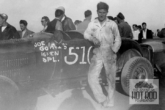

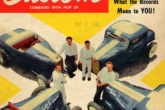

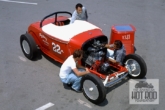
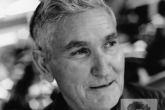
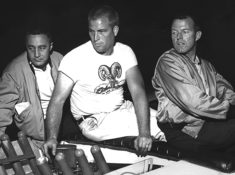 Vic Edelbrock Jr.
Vic Edelbrock Jr. Phil Remington
Phil Remington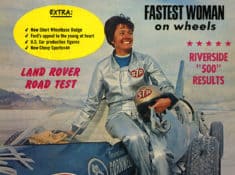 Paula Murphy
Paula Murphy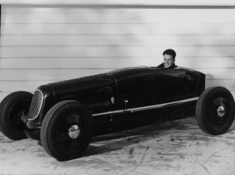 Stuart Hilborn
Stuart Hilborn